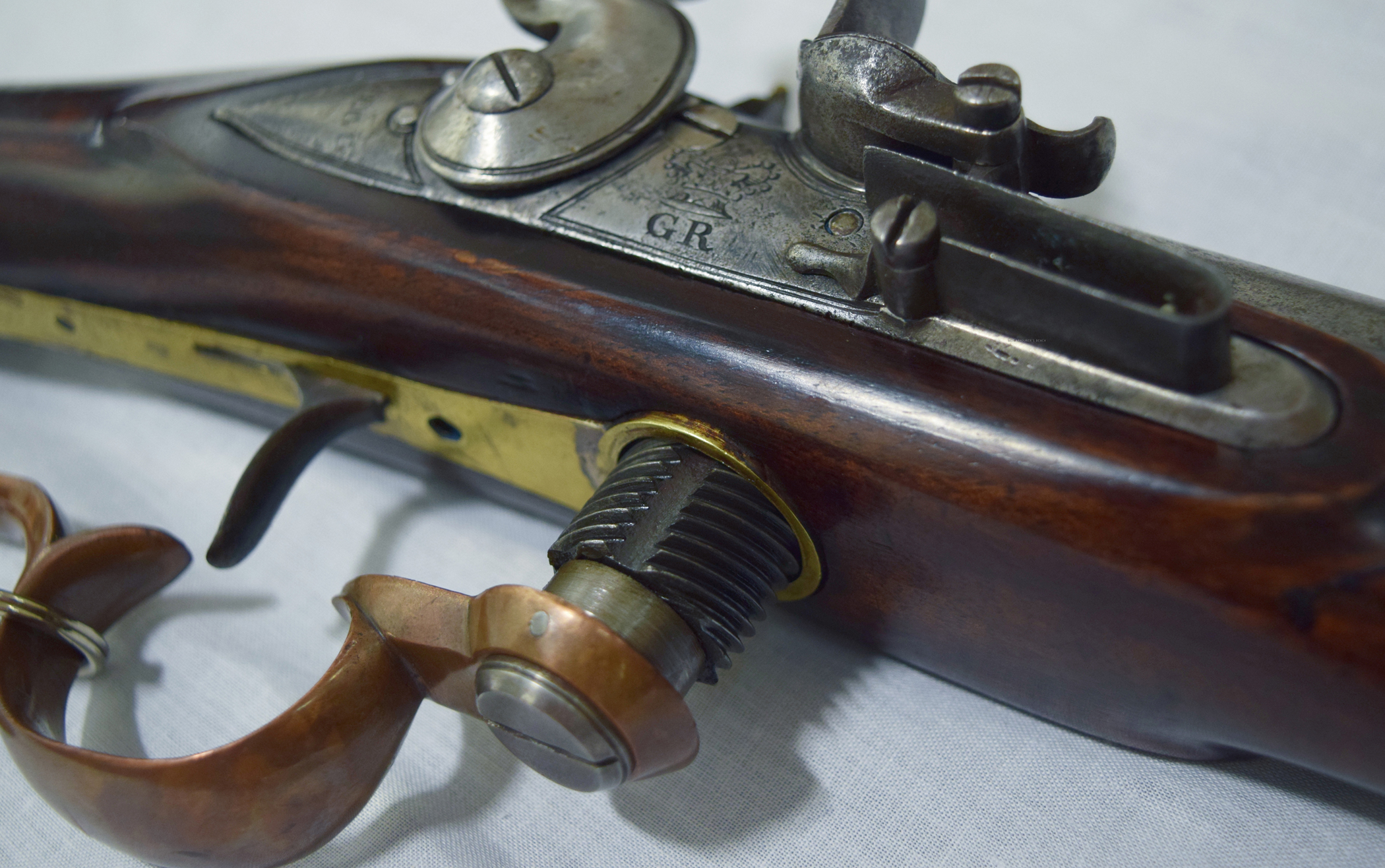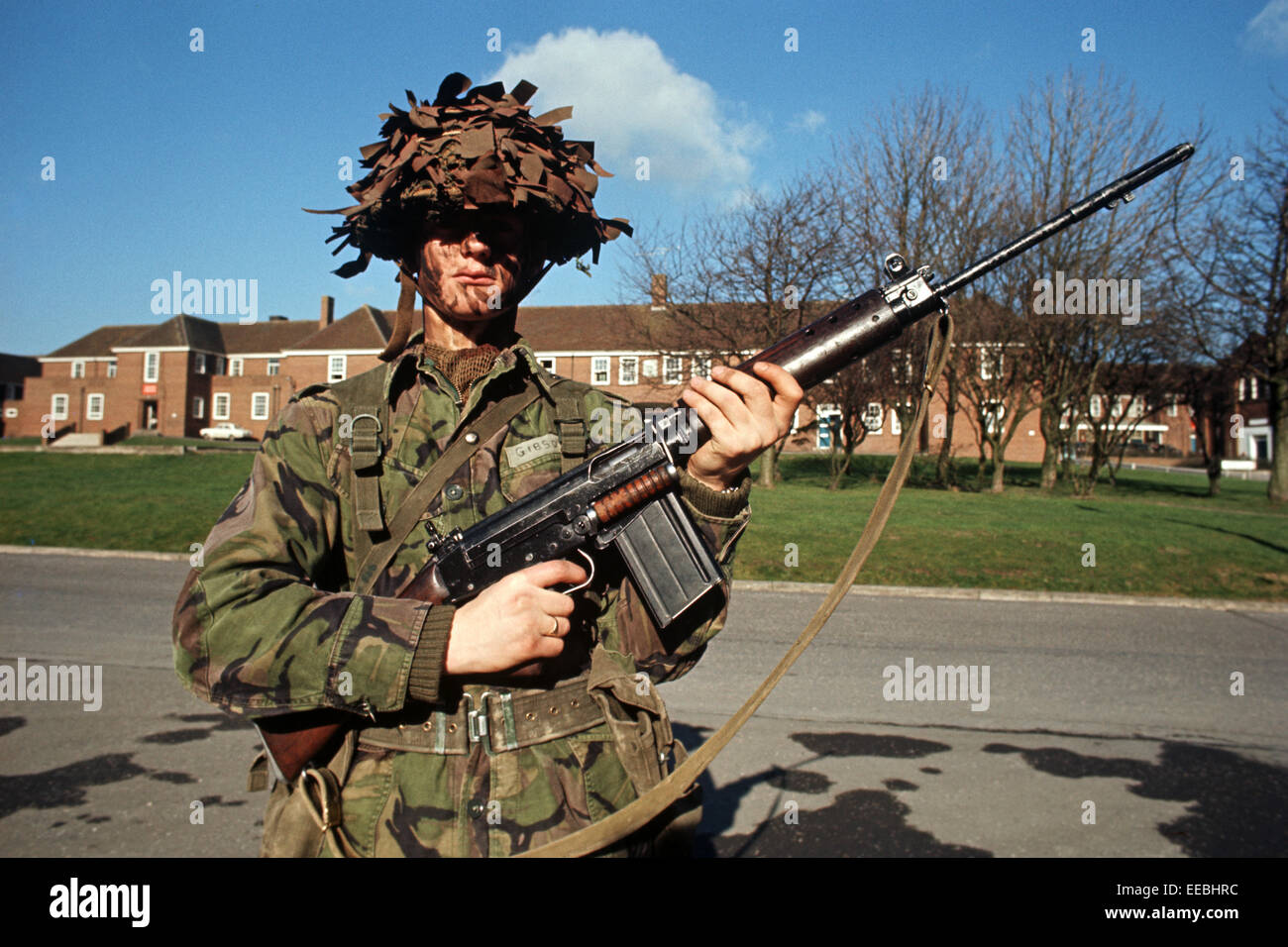British Military Weapons - This article relies on several references to important sources. Please edit this sentence by adding a second or third paragraph. Search source: "SA80" – News · Journals · Books · Scholars · JSTOR (July 2021) (Learn how and why to remove this template)
The SA80 (Small for the 1980s) is a British family of 5.56×45mm NATO service arms used by the British Army.
British Military Weapons

The L85 rifle variant has been the standard issue service rifle of the British Armed Forces since 1987, replacing the L1A1 self-loading rifle. The first model was produced in 1976, with the production of the A1 variant starting in 1985 and ending in 1994. A major modification by Heckler & Koch in the early 2000s led to the A2 variant and is still in service until 2020. A3 variant was released for the first time in 2018 with many updates.
Patrick Ferguson And His Rifle
The rest of the SA80 family includes the L86 light support weapon, the short-barreled L22 carbine, and the L98 cadet rifle.
The SA80 is the last in a long line of British firearms (including the Lee-Field family) from the Royal Small Arms Factory, a national firearms manufacturer and manufacturer of Field Lock, before its factory knife gun closed in 1988.
The concept dates back to the late 1940s, when a major mission was set up in the United Kingdom to develop a new cartridge and a new class of artillery based on World War II. War II. Two 7mm (.280 in) prototypes were built in bullpup configuration, designated EM-1 and EM-2. The latter is abbreviated to "Rifle, Automatic, Caliber .280, No. 9". When NATO standardized the 7.62mm rifle cartridge as the standard caliber for its rifle program, further development of this rifle was discontinued and the British Army received the 7.62mm L1A1 self-loading semi-automatic rifle. , a Liess-built version. Belgian FN FAL.
In 1969, Field Factory began work on a new family of weapons chambered in the newly developed British 4.85 × 49mm Intermediate cartridge. While the experimental weapon family differed greatly from the EM-2 in internal design and construction, its bullpup configuration with optical sights clearly influenced the design of what would become the SA80. The system consists of two weapons: the XL64E5 gun (also known as the "one-person weapon") and the light support weapon called the XL65E4 light machine gun.
Original British P 1864 Snider Type Breech Loading Infantry Rifle With
The sheet metal design and manufacture of the bolt, bolt carrier, guide rod and weapon disassembly bears a resemblance to the Armalite AR-18 that was manufactured from 1975 to 1983 by the Sterling Armaments Company of Essex.
During the development of the SA80, bullpup conversions were made for the AR-18 and Stoner 63.
In the field due to the fact that it can be used with packaging / products that allow for bullpup conversion, the latter is chambered in the experimental 4.85x49mm round. A bullpup conversion of the AR-15 was previously considered but the tube not being in stock prevented the idea from coming to fruition.

Technically, in the mid-1970s, the 4.85 × 49mm round was superior to the current version of the 5.56mm M193 round used by the US (for the M16 / M16A1) and other forces. (This was the opinion of members of the test team when demonstrating the XL64E5 at the British Army School of Infantry at Warminster.) The development life of small arms is long and continuous, and it has Estimated by professional test operators. The weapon will eventually perform well in the 4.85mm configuration.. For the 4.85mm round, both the propellant and the projectile are at the beginning of their development curve. In addition, weight for weight, more ammunition can be carried by one soldier - a significant advantage in combat. At the time it was thought that the argument for the 5.56mm standard in NATO was more economic. In the life of small arms, more money is spent on weapons than weapons. If the 5.56mm proponents have lost the argument in favor of the British 4.85mm round, the economic impact will be huge and the politics will no doubt be part of the final decision.
Here's Why You Should Love The Sa80a2 Bullpup As Much As The Brits Do
However, after NATO's decision to produce ammunition among its members, field engineers re-fired the American 5.56×45mm NATO M193 cartridge. A new 5.56mm version of the XL64E5 became known as the XL70E3.
The left-handed XL68 was also re-chambered in 5.56×45mm as the XL78. A different 5.56mm light support weapon, the XL73E3, was developed from the XL65E4, now noted for a full-lgth extended reception with a bipod in the muzzle pointing mode.
Further development from the first so-called "Phase A" pre-production led to the XL85 and XL86. By the time the XL85E1 and XL86E1 were finally adopted as the L85 and L86 respectively, several additional test models were developed. The XL85E2 and XL86E2 are designed as prototypes with 12 different E1 variants, including gas, bolt and magazine catch. Three series of variants were created for "vironmental user trials". The XL85E3 and XL86E3 variants are built with 24 replacement parts, especially the plastic plunger. The E4 has 21 adjustments, no changes to the pistol grip, and an aluminum plunger safety unlike the E3 variant. Finally, the E5 variants have 9 more modifications than the E3/E4 variants.
SA80 development was difficult from the beginning. One problem was at least three changes in personnel at the Royal Small Arms Factory, which led to the test being repeated several times. A problem with the design of the gun itself is that the material will be constantly removed from different angles as it heats up and the fire changes, which causes a large ejection port.
These Are The Five Longest Serving Firearms In Military History
The change from 4.85mm to 5.56mm also caused problems, because the fire rate was reduced but the pressure circle and time curve were different. The 4.85mm round is based on a 5.56mm case in anticipation of changing calibers. The barrel was easy to replace, but the fuel ports were too big. Because of its long barrel, LSW is less affected by pressure issues.
After receiving feedback from users and incorporating several design requests, including modifying the rifle for use with the heavier Belgian SS109 version of the 5.56×45mm round and improving reliability, The weapon entered service with the British Armed Forces in 1985. SIB 80. The SA80 family originally consisted of the L85A1, L86A1 Light Support Weapon (LSW), and the L98A1 Cadet GP rifle. The first weapon was launched in October 1985.
The SA80 family was designed and manufactured by the Royal Small Arms Factory at Field Lock. In 1988, the production of artillery was transferred to the Nottingham Small Arms facility owned by the Royal Ordnance (later British Aerospace, Royal Ordnance; now BAE Systems), a facility formerly known as ROF Nottingham. It is expected that the family L1A1 SLR, L2A3 (Sterling) submachine gun, L4 light machine gun (modern Br), and L7A2 target machine gun will be used at the division level; The regular army, the Royal Air Force and the RAF were to be replaced by 1987, the regular army by 1990, the remaining RAF in 1991, the Territorial Army from 1991-3 and the Royal Navy from 1993. Production was completed in 1994; More than 350,000 L85 rifles and L86 LSWs were produced for the British Armed Forces, comprising 95% of the total run.

The production line was quickly phased out with the closure of the Nottingham site in 2001. The development program and spare parts and replacement parts were subsequently met by the British owner Heckler. & Koch, which later reopened the Nottingham location.
Modern British Army Weapon & Personal Equipment Set (plastic Model) Hi Res Image List
As responsibility for the funding and services of the Home Defense Department of the British Overseas Territories is devolved to the regional government of the territory (the government itself falls under the responsibility of government (British) and not affiliated with the British Army), the SA80 was not assigned to these units. The Bermuda Regiment adopted the Ruger Mini-14 in 1983, although a small version of the L85 was also received for the purpose of familiarization with many of its personnel classes or comrades. friends in England;
In 2015 the army received 400 additional L85A2 guns to replace the Mini-14 as the standard issue gun.
The Royal Gibraltar Regiment, which has close ties with the British army, received the SA80 early on, while the Falkland Islands Defense Force received the Steyr AUG (another 5.56x45mm bullpup rifle).
Which worked until 2019 when the Defense Forces received the L85A2 as part of a greater effort to align its weapons, training and systems with the British military.
Proud !! New British Army Rifle Is Among World's 'most Lethal' Weapons
Shortly after receiving the service, problems began to appear
Military drone range, laser range finder military, military range bags, military range targets, long range military radio, military radio range, military range finder, military long range binoculars, range rover military discount, military range rover, range of military drones, military range bag
0 Comments